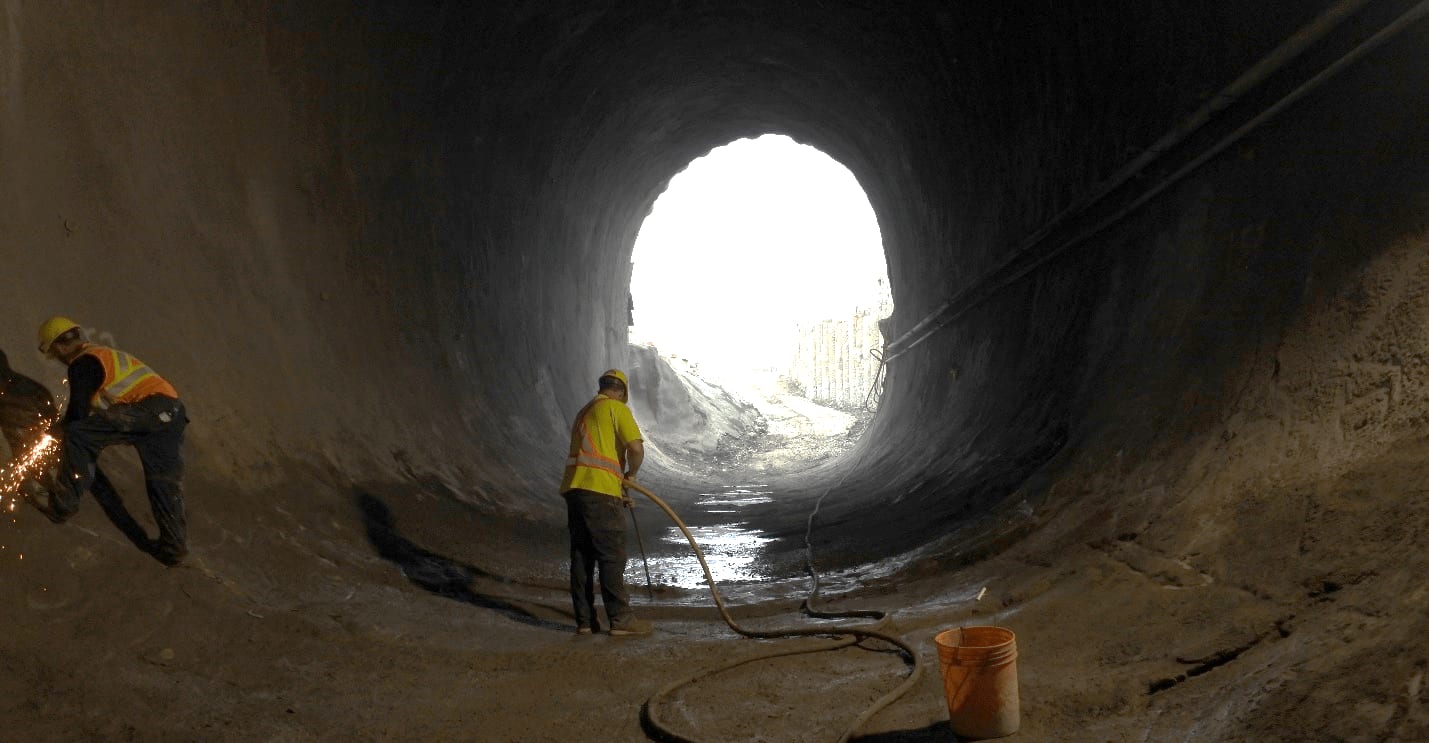How the 401/409 tunnel project is being built
How a ‘tunnel liner’ machine digs through the earth on Highway 401 and 409 Rail Tunnel Project.
Nov 11, 2020
Digging through rock, packed dirt and debris can be a rough job.
But there’s a machine that can smooth out the lingering bumps along the way.
Now that excavation is complete on Tunnel One of the Highway 401 and 409 Rail Tunnel Project – work that includes digging two tunnels to accommodate additional tracks that will help increase GO Transit rail service on the Kitchener Corridor – the construction crews have cleaned the subterranean passage in preparation of liner construction.
Crew member is using a grinder (left) to remove excess metal mesh that supports the tunnel structure. The tunnel is being cleaned and shotcrete lumps are being shaved. (Metrolinx photo).
The liner construction is a process of ensuring the tunnel is smooth in order to install track in the future. However, before the liner machine enters the tunnel, a few things need to happen first.
A waterproofing membrane wraps around the entire tunnel to prevent water from seeping through. The waterproofing membrane is rubber/plastic that is installed in sheets that are welded – heat sealed and rolled – to create a single impermeable membrane against water inflow into the tunnel.
At the same time, a permanent base – or invert – will be constructed to allow the liner machine to move through easily. This permanent base will ultimately support future tracks and rail service.
Waterproof membrane (yellow material) and rebar (metal bars) are set in place to form the base structure for the concrete pour. (Metrolinx photo).
The red equipment is a concrete finishing system that slides along a level track to ensure a flat surface on the floor when the concrete is poured. (Metrolinx photo).
(Concrete is poured on top of the layers of membrane to create an even surface. (Metrolinx video).)
The cured concrete floor becomes the new permanent base and is ready for the tunnel liner to move through.
How did the tunnel liner get to the site? The liner machine was assembled in multiple steps over a period of four weeks.
Step 1: The frame is assembled. (Metrolinx photo).
Step 2: Panels are attached to the frames. (Metrolinx photo).
Step 3: Liner machine assembly is completed with all panels in place. (Metrolinx photo).
The liner machine is assembled on-site and operated by Toronto Tunnel Partners. It provides a simple advantage – the team has control over the entire tunnel liner construction process. In turn, the quality of the work will reduce issues during on-going maintenance and increases longevity of the tunnels.
A special concrete mix – including reinforced polyethylene fibres – are delivered by a regular concrete truck and pumped through a network of pipes to the tunnel liner machine.
The network of pipes that feed concrete to the panels of the liner machine. (Metrolinx photo).
During liner construction, the panels on the machine expand outwards, pressing against the tunnel. Concrete is then pumped in and cured for 48 hours.
After the concrete has had enough time to cure, the panels on the machine retract and the unit moves to the next section, covering approximately eight metres per section and the process is repeated until the entire tunnel is smooth.
See – for experts used to doing this kind of tunneling work, it’s not so rough to get rid of those rough spots.
For more information or sign up for e-newsletter updates by emailing
by Teresa Ko Metrolinx communications senior advisor
